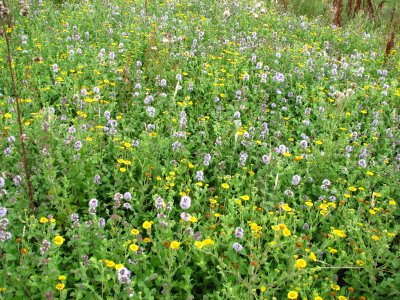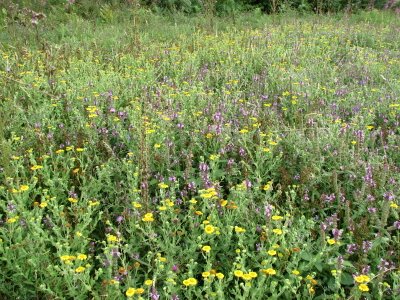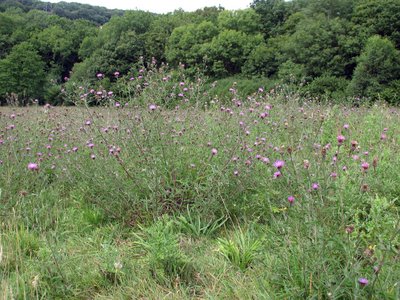


Once again I have taken a walk around the meadows in the Marline Valley west of Hastings and been surprised by the colourfulness of the flowers. In places there is a purple haze of
knapweed,
Centaurea nigra: elsewhere yellow
fleabane,
Pulicaria dysenterica, mingles with pink
marsh woundwort,
Stachys palustris or bluish mauve
water mint,
Mentha aquatica.
I was struck by the fact that fleabane seems to comprise about 50% of some of these colourful patches and there are very few other plants involved. What prevents a monoculture from developing and why are the two major constituent plants so evenly mixed?
Another dimension is the smell. Walking through meadows like this delivers a complex, constantly changing olfactory experience quite lost in modern grass fields. And of course, there are the proverbial clouds of butterflies and bees all enjoying the experience too and adding sound as well as movement. A meadow for all senses.



